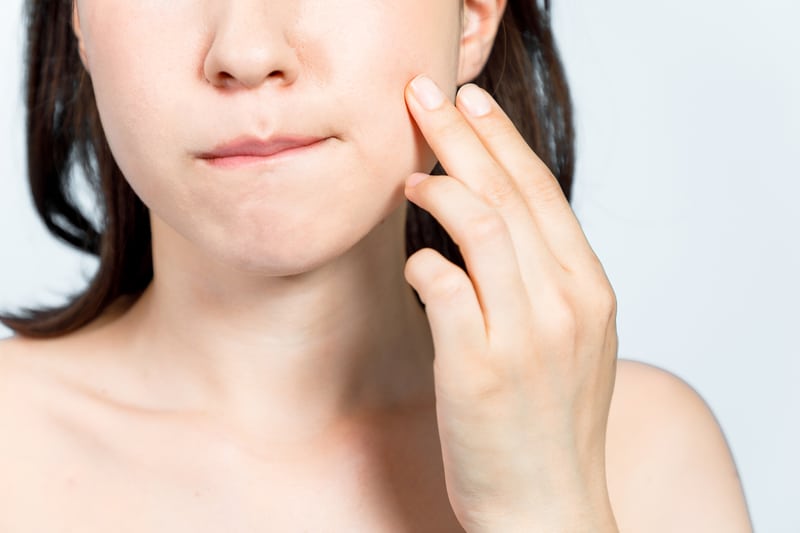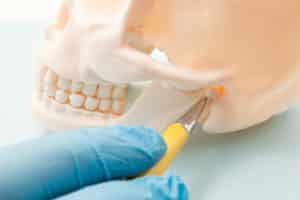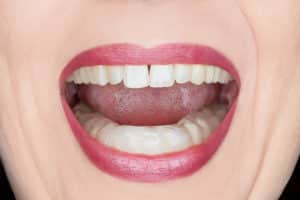Remedy Your TMJ Pain


There are countless joints throughout your body that connect different bones to each other. Your joints help you to move freely and without pain. However, many patients develop TMJ pain, meaning “temporomandibular joint” pain. That joint is one found on the sides of your face, where your jaw connects to your skull. Pain in these joints caused by inflammation, clenching, grinding and chronic conditions can make you be in pain all day long. Combat your TMJ pain with the right mouth gear and dental tips!
Joints and Your Temporomandibular Joint
You have countless body parts that all work together to keep your body in harmony and to keep you pain-free. Your muscles and ligaments connect to bones and they help create movement by pulling or retracting in different directions. This allows your body (and parts such as arms, legs or the mouth) to move. However, that’s not without the help of the joints. Your joints are hinged areas of your body which connect bones together with the help of tendons and cartilage.
Joints can pivot in different directions as the muscles move. There are about 360 joints in the body that allow you movement. Some studies report that there are 86 joints in the skull alone and 6 in the throat. The temporomandibular joint is located in your head by the temporal bone and the mandible (hence the name “temporomandibular). This is the joint that connects this bone to your mandible. This is also the joint that moves when you eat, chew, speak and more. This joint acts like a sliding hinge when you move and you have one of these joints on each side of your face. Normally, most people don’t have pain with these joints, and they work normally to open and close the mouth. However, millions of people do have pain in this area, and there are common reasons for it.

What Is TMJ Pain?
There are several reasons you may develop TMJ pain. You could have a genetic factor that causes you weakness and TMJ pain in that joint. You could have arthritis developing in this area, as many joint disorders stem from arthritic conditions. However, it is also possible that you have a jaw injury, that you are grinding your teeth at night, or are clenching your jaw. Many patients can start to see the signs of TMJ pain or a TMJ disorder because they will start to have symptoms such as:
- Daily headaches
- Jaw joint pain or noise
- Limited ability to open the mouth
- Ear congestion
- Dizziness
- Clenching or grinding the teeth
- Neck pain
- Teeth sensitivity
- Insomnia
How Can a Dentist Help TMJ Pain?
Often, patients that are experiencing TMJ pain may not realize that the cause actually stems from TMJ. We see patients visiting doctors and they simply get prescribed anti-inflammatory medication or painkillers. However, the symptoms never go away because the actual cause is not being treated. Drugs can mask the symptoms, do not treat the underlying cause and may have severe side effects. Dental professionals have been trained in mouth and face anatomy for at least 10 years. Because so much about oral health is connected to overall health, often simple oral appliances or changes can stop other health problems from happening.
The TMJ pain and symptoms that patients feel on a daily basis can actually go away with the right dental help, and that pain relief can happen quickly. Your bite can be a factor in many types of pain and functional problems. This is because of the inter-relationships of the overall muscular system. When a problem with a simple joint causes TMJ pain, then stems to neck pain or head pain, it’s because all of these areas are connected through the joints, muscles, nerves and body systems. Even if you only have headaches, it can be traced back to TMJ pain or disorder, and we can test that theory through custom dental devices.
We look for all the signs of clenching and grinding, plus a past history or broken or injured teeth as well as the health symptoms we listed. We take digital scans or molds of your teeth and in 1-2 weeks, you get a custom-made guard to protect your teeth. This guard is almost like a retainer and mouthguard mix, where it fits snug to the teeth and is thin, but it is a hard barrier for when the teeth want to crash together at night. Your jaws start to rest in a more relaxed position, and your TMJ pain and symptoms start to ease up until they go away. If you have pain in the temporomandibular joint area, it’s worth getting an oral appliance.

Get Rid of Your Symptoms
Do you have any of the symptoms we listed above? If so, make sure to schedule an appointment by calling Dr. Ania’s office at 303-443-0998. Dr. Ania will thoroughly examine your symptoms and will discuss treatment options with you. She can see if the problem stems from clenching or grinding your teeth, because there will be physical signs on your teeth. When the problem stems from ear, nose or throat issues causing your TMJ pain, she can refer you to the right orthodontist or otolaryngologist (ear, nose, throat doctor). However, most cases of TMJ pain can be treated with a custom-made mouth appliance that you sleep with. To see if this will work to relieve your symptoms quickly, have your mouth appliance made today!


